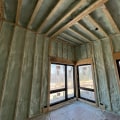Introduction
As a professional roofer with over 20 years of experience in the industry, I have seen firsthand the consequences of improper installation and maintenance of roofs. From roof failure to structural damage, these issues can not only be costly but also pose serious safety risks. In this article, I will discuss the importance of proper roofing techniques and materials, as well as the challenges and opportunities in the roofing industry.The Impact of Improper Roofing
One of the most common problems with roofs is failure due to improper installation. This can lead to a variety of issues such as leaks, cracks, and sagging.In addition, using subpar materials or neglecting regular maintenance can also result in roof failure. Not only does this put the building and its occupants at risk, but it can also be a major financial burden for property owners. Another consequence of improper roofing is poor customer satisfaction. Shoddy work and toxic business culture within the roofing industry can lead to dissatisfied customers who may seek out other companies for future roofing needs. This not only affects the reputation of individual roofing companies but also the industry as a whole.
The Importance of Proper Roofing Techniques and Materials
To avoid these issues, it is crucial for roofers to use proper techniques and high-quality materials.This includes following building codes and regulations, conducting thorough roof inspections, and using appropriate tools and equipment. One important aspect of proper roofing is structural analysis. This involves assessing the strength and stability of a building's roof trusses to ensure they can support the weight of the roof and any potential snow build-up. It also involves checking for warning signs such as creaking sounds, deformation of supports, and misalignment of sprinklers. Choosing the right materials is also essential for a successful roofing project. Wood shingles, asphalt, and gravel are some of the most commonly used materials, but it is important to consider factors such as climate and building structure when making a decision.
For example, flat roofs may require different materials than sloped roofs to prevent water pooling and potential leaks.
The Role of Technology in the Roofing Industry
Technology has greatly impacted the roofing industry in recent years. From advanced roofing materials to innovative tools and equipment, technology has made roofing projects more efficient and effective. For example, drones can be used for roof inspections, providing a more accurate and comprehensive assessment of a roof's condition. Additionally, technology has also played a role in job security and growth opportunities for roofing workers. With the rise of solar energy and green roofs, there is a growing demand for skilled workers who can install and maintain these types of roofs.This presents an opportunity for roofers to expand their skills and potentially increase their job security.
The Impact of COVID-19 on the Roofing Industry
The COVID-19 pandemic has had a significant impact on many industries, including roofing. While some companies have experienced a decline in business due to economic uncertainties, others have seen an increase in demand for their services as people spend more time at home and invest in home improvement projects. One challenge that the roofing industry has faced during this time is training and certification. With social distancing measures in place, it may be difficult for workers to receive proper training and certification. However, some organizations have adapted by offering online courses and virtual training sessions.Conclusion
In conclusion, proper roofing techniques and materials are crucial for avoiding failure and ensuring long-term success in the roofing industry.By following building codes and regulations, conducting thorough inspections, and using appropriate tools and materials, roofers can provide high-quality services and maintain customer satisfaction. Technology has also played a significant role in the industry, providing new opportunities for growth and job security. While the COVID-19 pandemic has presented challenges, the roofing industry has shown resilience and adaptability in navigating these uncertain times.


